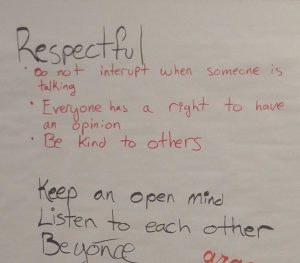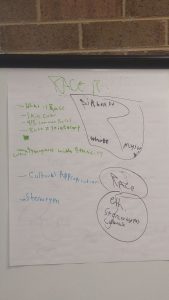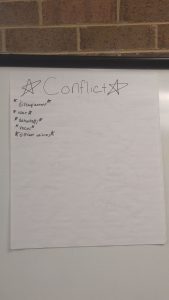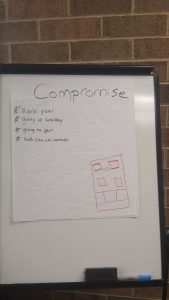I’m using this space to chronicle our journey through US History. These reflections will help me refine and improve my teaching, and maybe some others will also benefit! Visit here for a glimpse into my Dystopian Worlds & Transmedia Storytelling class. For my general observations on education and project-based learning, visit here.
11/13/2017
The semester has been flying by. The students have read Between the World and Me, by Ta-Nehisi Coates and Marching for Freedom, by Elizabeth Partridge. We’ve watched the film A Better Life, a dramatization of undocumented immigrants. The students have annotated Executive Order 1376 Border Security and Immigration Enforcement Improvements and I Have a Dream. We have watched video clips, read articles from The New York Times and Atlantic on housing discrimination. This week we took a guided visit of Then They Came for Me, an exhibit on the internment of Japanese Americans during World War II. The topics we have covered have engendered thoughtful, respectful discussions.
In parallel with this, the students have been developing first-semester projects on their choice of a topic in US History related to “Conflict & Compromise.” The topics are diverse: The Salem Witch Trials, Muhammad Ali, John Brown, and “fake news.”
09/11/2017
As I was thinking of an effective way to teach US History using project-based learning (PBL), while also incorporating the National History Day theme of “Conflict & Compromise in History,” I had an “ah-ha” moment. Our country is viscerally divided on a number of topics, perhaps none more apparent than race (and class) relations. So, that is the lens we are using as we start with current day and travel back in time to uncover the conflicts and compromises that led us to our current situation.
Quite frankly, I was uneasy with how smoothly this class was going to launch, since we were immediately jumping into sensitive material. So, the first major activity I had the students do was create a class contract, our rules of engagement. This is what they produced:
We won’t analyze why Beyonce is there. The students then all signed the contract.
From there, we moved on to a definition of race, which was fascinating to observe. The students, of varied ethnic origins, were totally at ease discussing this topic. They first aligned race with ethnicity and culture, but then didn’t know where to head when I asked about people with a multi-ethnic heritage. They did unanimously agree that in general our society equates “race” to skin color. Ultimately, the group conceded there is no easy way to define race, and that maybe there is no appropriate definition. Here are there notes from our discussion:
Since we are meshing our exploration of US History by intertwining race (and class), conflict, and compromise, we continued by discussing definitions for conflict and compromise:
I am excited to see how this unfolds!



